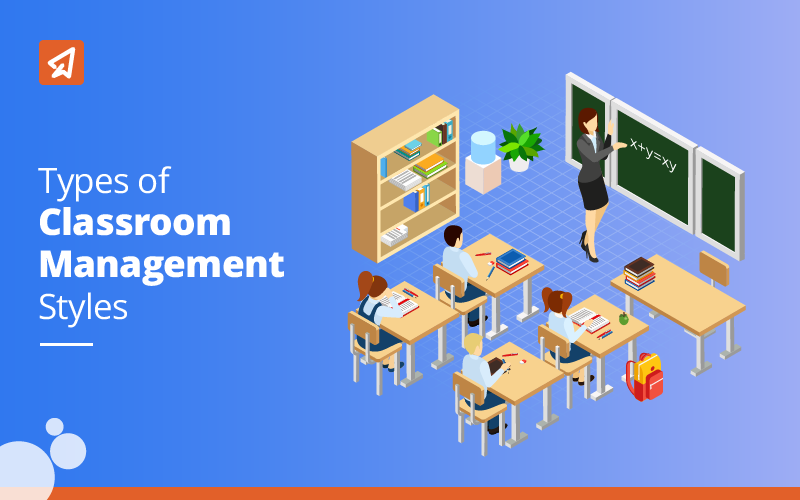Types of Classroom Management Styles

An effective classroom is one where the students are engaged, and the teacher can deliver the lesson efficiently. For this to happen, teachers need to actively nurture a classroom environment that helps the students feel safe while keeping their interests and energies focused on the lesson. Effective classroom management is an outcome of leveraging the right teaching style, and classroom management strategies are the key to the success of both students and teachers.
Importance of Classroom Management Styles
Classroom management styles are crucial in establishing a positive classroom culture that helps instil a sense of confidence, inclusiveness and responsibility in students. It can make students feel valued and committed to their own learning process and, at the same time, foster a healthy teacher-student relationship.
- Preparation for Real-World Skills: An apt classroom management style can help develop essential life skills and values such as interpersonal skills, responsibility, confidence, discipline and respect in students.
- Conducive Learning Environment: Utilising an appropriate classroom management style builds and supports an environment conducive to learning where students feel safe, motivated, and engaged and can freely share their challenges and views.
- Teacher-Student Relationships: An effective classroom management style enables two-way communication between the teacher and the students in an environment of mutual trust and respect. This builds a strong bond between the two, which is ideal for a good teaching-learning process.
Four Types of Classroom Management Styles
Having understood the importance and advantages of using effective classroom management, let us now consider the various classroom management styles and their key points. There are 4 key classroom management styles, each of which can be used to optimise the classroom environment for an ideal teaching-learning experience for different stages in a student’s development.

Authoritarian Classroom Management Style (The Commander)
This style of teaching is mainly teacher-centric, where lessons are delivered in the form of lectures or classroom instructions. The teacher proceeds as per the lesson plan in a controlled manner, and the students learn through observation, information absorption and note-taking. The learning takes place through only one-way active communication by the teacher with strict classroom rules. Also referred to as the commander style of classroom management, where the teacher remains the central authority for precise instruction and lesson delivery.
Key Points of Authoritarian Classroom Management Style:
- There is a clear structure prescribed for the classroom. The teacher remains the central authority and the students learn through passive absorption of knowledge.
- Heavy stress on adherence to classroom rules, with high expectations from students to maintain required discipline leads to high levels of control.
- With emphasis on discipline, the teacher sets down clear ground rules with defined consequences for non-compliance.
- Single-channel, one-way communication and a dictated format that leaves no room for classroom disruption.
Authoritative Classroom Management Style (The Guide)
Distinct from the previous authoritarian style, the authoritative classroom management style is a slightly more relaxed form of teaching-learning that allows two-way communication between the teacher and the student. This style is characterised by high teacher involvement in the student’s needs and, at the same time, a controlled manner of lesson delivery. Under this style, the teacher maintains good control of the lesson delivery and classroom discipline while also engaging with students regarding their doubts, needs, and understanding. This style is also sometimes referred to as the optimal balance between instruction and the learning process.
Key Points of Authoritative Classroom Management Style:
- The teacher functions more as a guide, demonstrating information and allowing for student response before proceeding.
- Due to the interactive nature and two-way communication, this style demonstrates effective communication between teachers and students.
- Students are encouraged to actively participate and take responsibility for their learning through positive reinforcement.
- Though not as strict as the authoritarian style, this style of classroom management sets clear classroom rules and expectations of students’ responsibility and discipline, therefore providing a balanced approach.
Indulgent Classroom Management Style (The Empowerment Enabler)
This style of classroom management focuses on building student engagement, giving them space and time to develop their individual approach and thinking. The teacher provides direction for the students to explore concepts and learn in their individualised manner. With no fixed lesson plan and a more free-flowing attitude, this approach helps build student creativity. The classroom environment is casual and relaxed, with little emphasis on control.
Key Points of Indulgent Classroom Management Style:
- Even though this style features low on teacher control, it requires a high level of involvement from both teachers and students for an effective teaching-learning process.
- This style focuses on giving students the freedom to express themselves and participate actively in their own learning process.
- The lack of structure in this style can sometimes lead to a chaotic learning environment in the classroom.
- This approach provides a high degree of freedom to the teacher to adapt the learning process to the student’s interests, engaging them more productively.
Permissive Classroom Management Style (The Freedom Advocate)
A free-flowing approach, the permissive classroom management style focuses on student autonomy. It allows the students to follow their own ideas and exploration, with little or no role in the lesson plan by the teacher. There are rules and regulations, and the students have the liberty to make their own decisions.
Key Points of Permissive Classroom Management Style:
- With a hands-off approach, the teacher takes a more remote observational stance under this approach.
- Characterised through low control and involvement by the teacher, this style gives students high control of their learning environment.
- With no restrictions, students are free to pursue subjects and interests, personalising their learning to their individual strengths.
What is the Best Classroom Management Style?
Each of the 4 classroom management styles described above can be used to leverage an optimal teaching-learning process at different stages for the student.
Kindergarten and young students might need more classroom discipline, while middle and senior school students might need more space for individualised and personalised learning. Certain concepts might be better taught through Authoritarian or Authoritative classroom styles while other concepts might need more creative exploration possible through Indulgent or Permissive classroom styles.
Having said that, if the teacher changes the classroom styles too often, students can become confused about what is expected of them. It is generally agreed that Authoritative or Indulgent classroom management styles lead to more positive student behaviour and learning outcomes.
Also Read: Classroom Management Strategies & Techniques
Final Words
Every teacher, over time, develops their own classroom management style that resembles one of these styles. As a new teacher, you might find a specific style resonates more with you than the other. Apart from personal preference, what also dictates the style is the needs of students in every batch.
As an experienced teacher, you might find yourself adapting your style more towards one or another approach with changing requirements of the curriculum. In all cases, what remains essential is the need to develop a healthy teacher-student relationship that promotes mutual respect, communication, and trust to power the most efficient teaching-learning process.
Last Updated on March 7, 2025
Reviewed by

Prachi Singh | VP - Academics
Prachi Singh is a highly accomplished educationist with over 16 years of experience in the EdTech industry. Currently, she plays a pivotal role at Extramarks, leading content strategy and curriculum development initiatives that shape the future of education...read more.









